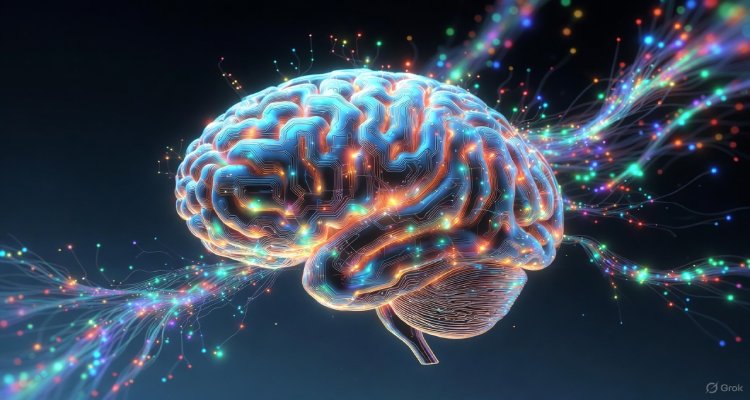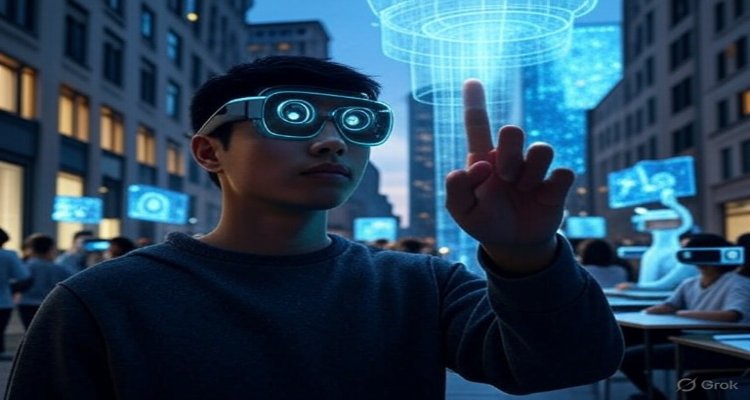TechnoSphere 2030: Shaping Tomorrow’s Digital Reality
By 2030, the TechnoSphere promises a fully immersive digital reality blending AI, virtual spaces, and human creativity—reshaping work, culture, and identity.
Introduction: A Glimpse Into the Future
Imagine walking into a digital city where your colleagues, favorite artists, and even historical figures interact with you in real time—not as avatars, but as lifelike presences powered by advanced AI. This is not the plot of a sci-fi movie but the envisioned reality of TechnoSphere 2030, a concept that is quickly becoming the blueprint for our digital future.
By the next decade, the convergence of artificial intelligence, quantum computing, immersive virtual worlds, and human imagination could create a seamless layer between the physical and digital. This “TechnoSphere” is poised to redefine not just technology, but society itself.
Context & Background: From the Internet to Immersive Realities
The world has seen transformative digital milestones—from the rise of the internet in the 1990s to the smartphone revolution of the 2000s, followed by the social media boom. More recently, concepts like the Metaverse, Web3, and AI-driven platforms have shifted conversations toward immersive and intelligent digital spaces.
Yet, many of these early models fell short. The Metaverse stumbled due to clunky adoption, economic uncertainty, and lack of interoperability. What TechnoSphere 2030 represents is not just another iteration but a synthesis of lessons learned, designed to create a fully connected ecosystem where humans, machines, and data interact symbiotically.
Main Developments: The Building Blocks of TechnoSphere 2030
Artificial Intelligence Everywhere
AI will be the backbone of the TechnoSphere—powering digital assistants, personalized economies, and even autonomous governance within virtual environments.
Quantum & Neuromorphic Computing
By 2030, breakthroughs in computing will allow simulations of near-infinite complexity, enabling realistic virtual environments indistinguishable from physical reality.
Immersive Interfaces
Instead of bulky headsets, future interfaces may include neural links, AR contact lenses, or holographic projectors, making immersion seamless and natural.
Decentralized Economies
Digital ownership will move beyond NFTs into fully functional, interoperable economies where individuals can own, trade, and monetize data, digital assets, and even virtual land.
Digital Identity & Culture
The TechnoSphere will push society to rethink identity, privacy, and creativity. Who are you when you can be anyone—or everyone—at once?
Expert Insight & Public Reaction
“TechnoSphere 2030 isn’t just about technology—it’s about redefining human experience,” says Dr. Maya Chen, a futurist at the Institute for Digital Futures. “We’re moving toward an era where digital and physical lives are indistinguishable. The challenge is ensuring ethics and equity keep pace with innovation.”
Public opinion is divided. While younger generations embrace immersive worlds, critics raise concerns about privacy, addiction, and digital inequality. As one analyst noted, “Without careful governance, we risk creating a two-tiered society: the digitally empowered and the digitally excluded.”
Impact & Implications: Who Wins, Who Loses?
The TechnoSphere could transform industries across the board:
- Work & Collaboration: Offices could dissolve into persistent digital hubs where employees worldwide interact in lifelike virtual spaces.
- Education: Classrooms may become immersive, experiential learning environments—students could explore ancient civilizations or outer space firsthand.
- Healthcare: Virtual diagnostics and AI-driven care will allow remote yet precise medical treatment.
- Economy: Entirely new markets—virtual architecture, neuro-design, synthetic culture—could emerge.
But risks remain. Cybersecurity, mental health, and surveillance capitalism are critical issues that must be addressed before TechnoSphere 2030 can thrive.
Conclusion: A Future in Our Hands
TechnoSphere 2030 represents the most ambitious vision of digital reality yet—an interconnected world where technology amplifies human potential. But its promise comes with responsibility. The choices made today in ethics, accessibility, and governance will determine whether this future becomes a utopia of inclusion or a dystopia of division.
As we move closer to 2030, one truth is clear: the digital reality of tomorrow is being shaped now, and it will reflect not only our technological progress but also our collective values.
Disclaimer: This article explores futuristic scenarios based on current technological trends and expert insights. It is not a prediction but a conceptual framework for understanding possible developments by 2030.











